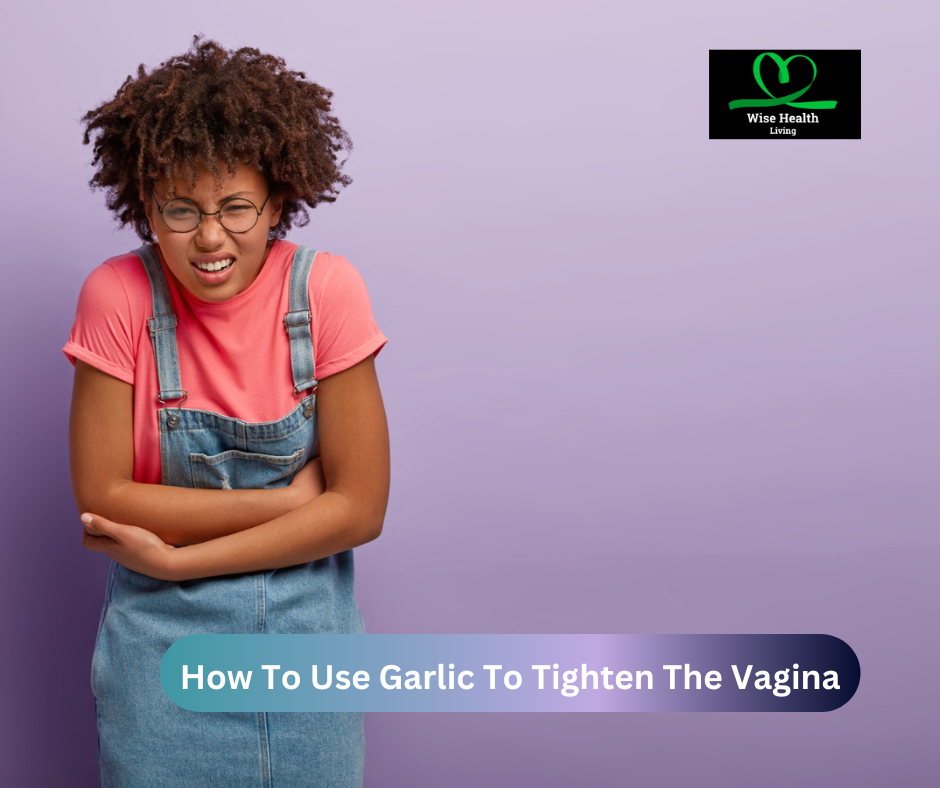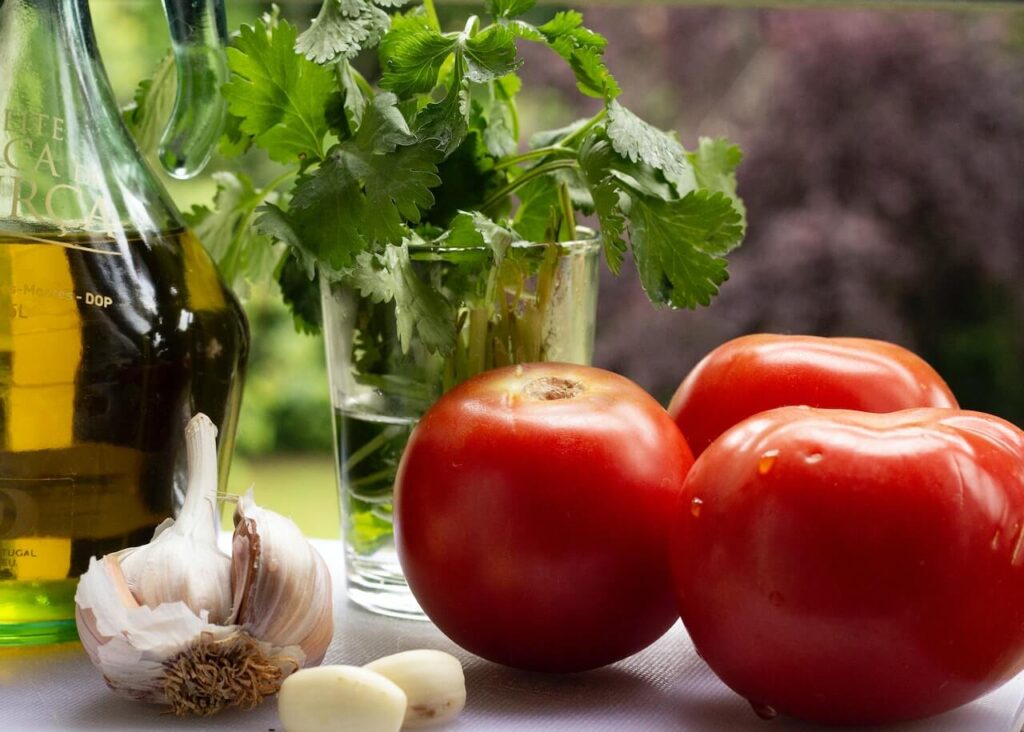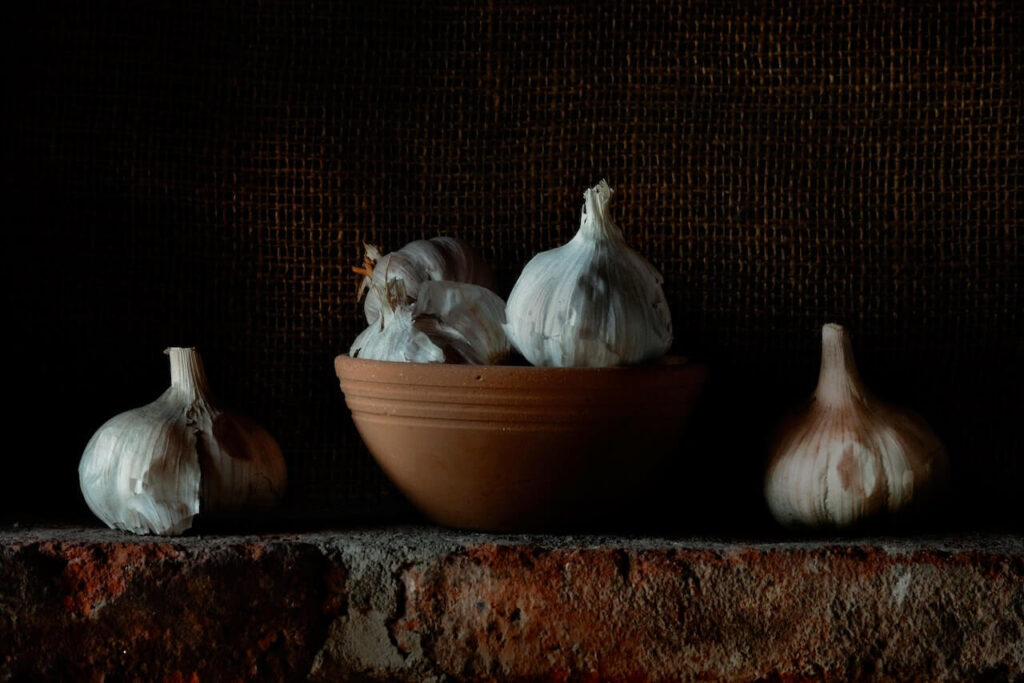Women often seek tight and enjoyable vaginas so that they can give and receive pleasure from their partners. This is why there are a lot of conversations about how to use garlic to tighten the vagina and other ways to tighten up down there.
Sex is as important to any romantic relationship as the world as any other thing. Sex brings partners closer together, it gives them pleasure unexplainable; it opens them to various levels of intimacy and trusts that nothing else can bring. It also helps them share their bodies and pleasures with each other.
We cannot fault the woman for wanting a tight vagina. She knows that every man wants a tight vagina to enjoy the best sex. This, under normal circumstances, keeps the man faithful to her, understanding that he cannot get that kind of sweetness anywhere else.
But before diving deep into how to use garlic to tighten the vagina, let us first define the terms and all that concerns it.
What is a vagina?
The vagina is a closed muscular canal that comes all the way from the outside of the female genital area also known as the vulva to the neck of the uterus which is known as the cervix.
In the vagina, a baby descends during birthing, the lining of the uterus is lost during menstruation, and penetration may occur during intercourse.
The hymen, a thin layer of mucosal tissue, generally covers a portion of the outer vaginal opening. It also helps the flow of menstrual blood. This process is important to the menstrual cycle in humans.
The Latin word “vagina” (plural: vaginae or vaginas) means “sheath” or “scabbard” in English. During the context of pregnancy and delivery, the vagina may also be referred to as the birth canal.
Many people refer to the vagina as the organ for both urinating and reproduction. The urethral opening for the urinary system and the vaginal opening for the genital tract are the two external apertures in the vulva that are typically present in females. Male animals typically have a single urethral opening for both urine and reproduction, in contrast to this.
Structure of the vagina
The vagina is a stretchy, muscular canal featuring a lubricating and sensory lining that is soft and flexible. The uterus is connected to the outer world through the vagina. The internal end of the vagina is formed by the uterus’s cervix, which protrudes into it from the vulva and labia, which serve as the entrance.
During sexual activity, the vagina receives the penis and also acts as a channel for menstrual flow from the uterus. The newborn goes through the vagina during delivery (birth canal).
The vaginal entrance is surrounded by the hymen, a thin tissue barrier. Engaging in sexual activity or physical activity, it may tear or burst.
The vagina is a collapsed tube with the front and rear walls pressed together when it is not sexually stimulated.
Before we go in too deep, let us also check out what garlic are and how they fit into this equation
What is garlic?
Garlic is a species of bulbous blooming plant belonging to the Allium genus. Garlic is also known by its botanical name: Allium sativum.
Garlic cloves are used for food (raw or cooked) or for therapeutic purposes. Due to its strong flavour, garlic is frequently used as a flavouring or condiment worldwide. They have a distinctively sour, peppery taste that significantly mellows and sweetens with cooking.
The onion, shallot, leek, chive, Welsh onion, and Chinese onion are among its near cousins.
Recommended – Can Postinor 2 Flush Out Sperm?
The History of Garlic
With a history dating back many thousand years of human consumption and use, garlic is a native of South Asia, Central Asia, and northern Iran.
The word “garlic” originates from Old English, “garlēac”, meaning gar (spear) and “leek”, as a ‘spear-shaped vegetable called “leek”.
Records indicate that Mesopotamia has been growing garlic for at least 4,000 years. Both China and Egypt have used garlic for thousands of years.
Garlic that was in good condition was discovered in Tutankhamun’s tomb (c. 1325 BC). According to Pliny the Elder, it was drunk by peasants in Africa as well as by soldiers, sailors, and agricultural classes in ancient Greece and Rome. The ancient Greeks put garlic on the stone heaps at crossroads as Hecate’s dinner.
Garlic has been used as both a culinary flavouring and a conventional medicine since the time of the ancient Egyptians. 76% of the world’s supply of garlic comes from China.
The reason why people smell after eating garlic
Garlic is frequently referred to as the “stinking rose” because of its strong odour. When consumed in large quantities, garlic can be very noticeable the next day in the diner’s perspiration and breath.
This is due to the metabolism of garlic’s pungent-smelling sulphur compounds, which results in the formation of allyl methyl sulphide. Since it cannot be metabolised, allyl methyl sulphide (AMS) enters the bloodstream.
It is transported to the skin and lungs, where it is expelled. The effects of consuming garlic may last for a long period because digestion and AMS release both take a number of hours.
Eating fresh parsley is said to lessen the common occurrence of “garlic breath”.
Parsley, therefore, is mostly found in many garlic recipes, such as pistou, persillade, and the garlic butter spread used to make garlic bread.
What are the health benefits of Garlic?
The majority of the health advantages of garlic are brought on by sulphur compounds that are created when a garlic clove is chopped, crushed, or chewed.
Allicin is the most well-known substance. Nevertheless, it is only momentarily present in freshly cut or smashed garlic.
Diallyl disulfide and s-allyl cysteine are two additional substances that could contribute to the health advantages of garlic.
Sulphur chemicals are found in garlic that comes into your body through your digestive tract. After that, they spread throughout your body and have a significant biological impact. A single clove of raw garlic weighs 3 grams and provides 1% of the daily value for selenium, 2% of the daily value for vitamin B6, and 2% of the daily value for manganese.
Moreover, this quantity of garlic has 4.5 calories, 0.2 grams of protein, 1 gramme of carbohydrates, and 0.06 grams of fibre.
Many additional nutrients are also present in garlic at trace levels. Here are some pointed benefits of garlic.
- Supplemental garlic is also well-recognised for enhancing immune system performance and lowering the risk of colds and the flu.
- Garlic supplements have been shown in studies to significantly lower blood pressure in persons with high blood pressure.
- Supplements sometimes may come in as effective as prescription drugs.
- Moreover, studies have shown that taking supplements with garlic can lower LDL (bad) and total cholesterol, especially in people with high cholesterol. Triglycerides and HDL cholesterol, which are commonly known as good cholesterol, do not appear to be impacted.
- Antioxidants found in garlic can aid in preventing cell ageing and damage. Dementia and Alzheimer’s disease risk may be lowered by it.
- Garlic has also been known to have positive benefits on a number of chronic disease-causing factors, so looking at it logically, garlic could also prolong your life.
- Those with heart problems may perform better physically if they eat garlic. The merits of garlic for those without heart disease are still being debated.
- In one investigation, garlic was found to dramatically lessen lead poisoning and associated symptoms.
- By raising oestrogen levels in females, garlic seems to offer some advantages for the health of the bones.
- Garlic is also used to treat tick and mosquito bites. It also serves as a repellent.
- It is also believed to help treat bacteria and fungal infections.
- Garlic is also used to heal ear aches, menstrual cramps and abdominal pains.
- It also helps prevent the hardening of the arteries (atherosclerosis) and stroke.
How to use garlic to tighten the vagina – the myth
Some people are of the opinion that steaming the vagina with a mixture of garlic and hot water or herbs; or putting a garlic clove into your vagina would help tighten it. Let us say for one that these ways are not guaranteed or proven and may pose a threat to your vaginal health.
Read Also – How To Get Sperm Out Of Your Body Fast
Tightening the vagina with garlic through steaming
In this method, garlic cloves are crushed and put into a pot to boil. In some instances, other herbs are added to help facilitate the tightening and cleansing of the vagina.
When the mixture is boiled, they pour it into a container where the woman will sit or squat over the steam that rises. Her lower body and the container with the mixture are covered with a blanket or specially made tent-like structure to trap and direct the steam into her vagina.
She is to be there for about twenty to thirty minutes for favourable results.
Tightening the vagina with garlic put into it
This method requires one putting a string through a garlic clove, tying it in place around the clove and then pushing the clove as far into the vagina as possible. They let the string run out of the vagina so that the clove can be pulled out when needed. The clove is left in the vagina for a while to tighten and cleanse it of unwanted elements.
When time passes, the garlic clove is then pulled out of the vagina using the string and disposed of.
Douching with garlic to tighten the vagina.
This process takes on the same ways used by the steaming method. The only difference is that the woman does not need to sit over a stream. The mixture is left to cool and is then poured into a douche. The douche is then put into the vagina and the mixture is poured into the vagina to wash it. They believe that by doing this, you will tighten and cleanse the vagina.
Does Garlic really tighten the vagina?
Many women say that inserting these processes helps tighten the vagina. This is a not true and only a pure myth. There is no scientific evidence backing these processes.. The vagina can suffer vaginitis which is commonly referred to as a toilet infection if one douches with or places a vagina into her vagina. The steaming process can also cause scalding, burns and blistering of the vagina and some other problems if it is applied extremely.
How then does one tighten the vagina?
Kegel exercises and vaginoplasty are the only two methods available for tightening the vagina.
a. Kegel exercises
This entails tightening and loosening the muscles in your pelvic floor in order to build that area’s strength and tighten your vagina. Moreover, it enhances orgasms and tightens the vagina.
Kegel exercises for vaginal tightening
All you need to do to strengthen your Kegels and have a tighter vagina is:
- Lay on your back in a comfortable posture.
- Your pelvic floor muscles should be tightened for 5 seconds, then released for a further 5 seconds.
- At least five times should be added to this process.
As you practise, your ability to contract your vaginal muscles and experience the pleasure you desire and offer during sex will improve.
b. Vaginoplasty
On the other hand, vaginoplasty is a rejuvenation procedure that helps to address the vagina’s loosening and distention. It aids in regaining the ability of the vaginal muscle to contract and tightens.
How does vaginal tightening with vaginoplasty work?
Vaginoplasty involves bringing the divided muscles back together and removing extra mucosa skin from the vagina’s backside.
After establishing how much tightening is necessary, a pie-shaped wedge is created to indicate the extra skin that has to be removed from inside the vagina. Strong sutures are used to reinforce the tissues beneath the skin.
After the tightening of the vaginal canal, the mucosal skin is sutured shut. For a more attractive result, external skin that protrudes from the body can also be reduced.
A tighter vaginal canal is the end outcome, which might help you increase your level of sexual enjoyment.
What are the dangers and potential side effects of vaginoplasty?
But take caution, as getting a vaginoplasty requires spending a lot of money. Also, you must be prepared for a lot of discomfort and other dangers associated with the treatment, which might include bleeding, infection, and other consequences.
Together with not using sanitary napkins or tampons for the next eight weeks. No sexual activity is permitted then, and you might need to use a dilator (a medical device that can be used to help reduce pain in the vagina).
In conclusion
Now that we have known the answer to “how to use garlic to tighten the vagina, we can rest assured that garlic has no place in or around the vagina. It could be eaten raw or used to flavour and supplement food and drugs, but let it stay away from a woman’s nether regions.



